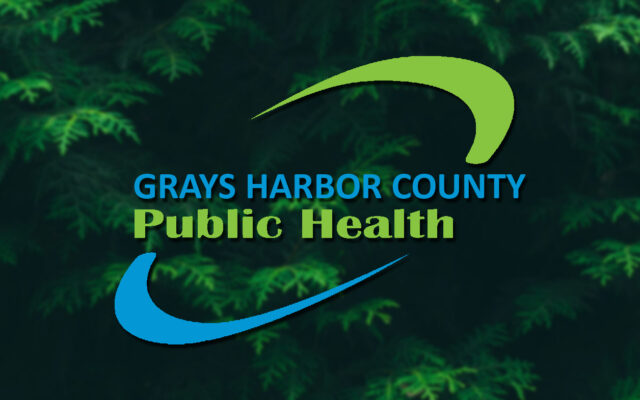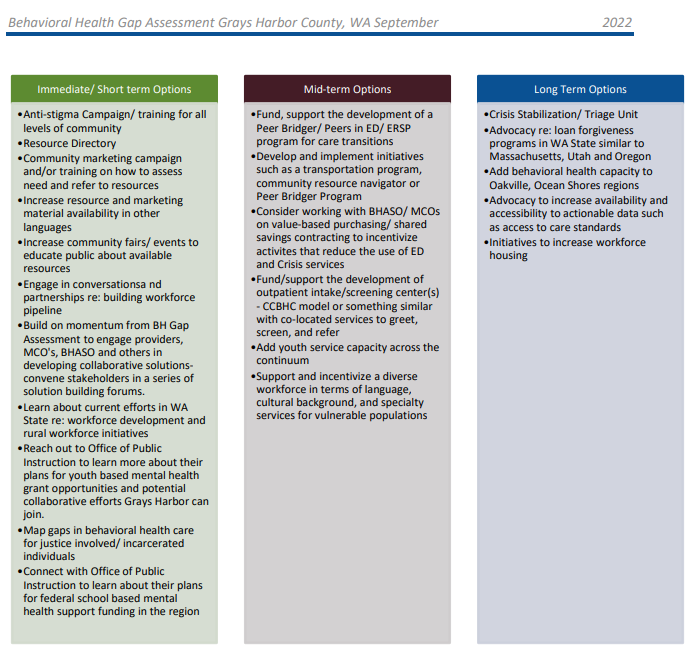Behavioral Health Gap Analysis shows deficiencies in county; recommends actions

The recently-completed “Behavioral Health Gap Analysis” for Grays Harbor was released this week.
The report is intended to provide a blueprint for Grays Harbor County Public Health and partners to address barriers to mental health and substance abuse disorder services in the county.
“The Behavioral Health Gap Analysis is a big step forward in the county’s effort to develop a ‘continuous system of care’ approach to mental health and substance use disorders,” said Grays Harbor County Public Health Director Mike McNickle. “Our hope is that this report will serve as a guideline for decision makers when weighing options how to best improve the mental health and substance use disorder systems that serve Grays Harbor County residents.”
The report, released Oct. 3, used local service provider surveys and interviews, community forums and a community survey, and existing available data from local, state and national sources to paint a picture of the current situation and provide recommendations for improving services within the county.
“This report was able to be completed in a very short time frame due to the years of good questions, research, and collaboration between many of our community partners who work on these issues every day,” said Grays Harbor County Public Health Healthy Places Manager Cassie Lentz. “We are pleased to see the resulting report digs down to the root causes, not just symptoms, and most importantly outlines actionable strategies we can take on together to improve this system.”
According to the report, many areas within the county are lacking, including alcohol and drug follow-up care, the percent of the population that are arrested, the amount of emergency department visits, and mental health treatment engagement.
While some areas were noted as needing improvement, areas such as mental health follow-up care and substance abuse disorder engagement show that Grays Harbor is doing better than Washington state as a whole.
The report states the percentage of the population that is unhoused is at the same rate as the state.
Methamphetamine use showed a rate locally over twice the state number, with opioid deaths also at a rate 56% above the state data.
The analysis goes further in identifying local strengths within the county, including a high level of engagement of both the community and providers, and highlights the benefit of local therapeutic treatment courts.
It also states that despite the strengths, “Grays Harbor consistently uses more crisis services per capita than other counties in the same region.”
It noted that “Analysis of the trends shows that a high percentage of the responses are to clients who are familiar users of crisis services.”
A number of recommendations were made within the analysis to improve the local data moving forward, including immediate/short-term, mid-term and long-term options for improving the existing system.
The report is available at https://tinyurl.com/bdekmtza.
The report also includes an interactive data dashboard, available to the public. It provides a visualization of some of the key data within the report, broken down by census tract, poverty level, and race-ethnicity.
The link to the dashboard is https://public.tableau.com/app/profile/hma.data.visualizations/viz/GraysHarborBehavioralHealthGapAnalysis/AmericanIndian.
You Might Also Like




